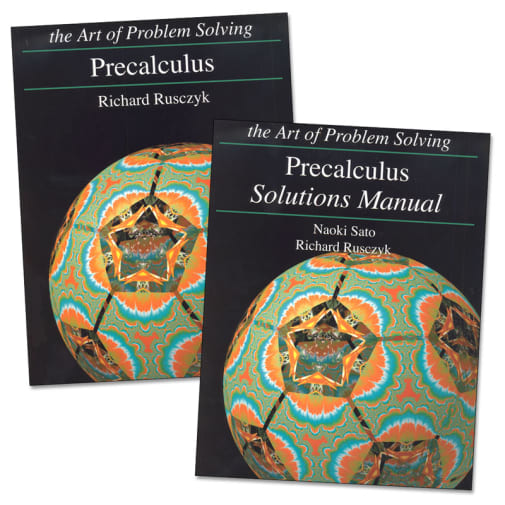The Art of Problem Solving: Precalculus Set
Description
A comprehensive textbook covering precalculus topics. Specific topics covered include trigonometry, complex numbers, vectors, and matrices. Includes many problems from the AIME and USAMO competitions.
Precalculus is part of the acclaimed Art of Problem Solving curriculum designed to challenge high-performing middle and high school students. Precalculus covers trigonometry, complex numbers, vectors, and matrices. It includes nearly 1000 problems, ranging from routine exercises to extremely challenging problems drawn from major mathematics competitions such as the American Invitational Mathematics Exam and the USA Mathematical Olympiad. Almost half of the problems have full, detailed solutions in the text, and the rest have full solutions in the accompanying Solutions Manual.
As with all of the books in Art of Problem Solving's Introduction and Intermediate series, Precalculus is structured to inspire the reader to explore and develop new ideas. Each section starts with problems, so the student has a chance to solve them without help before proceeding. The text then includes solutions to these problems, through which new techniques are taught. Important facts and powerful problem solving approaches are highlighted throughout the text.
Paperback (2nd edition) Text: 528 pages. Solutions: 272 pages.
Covers complex numbers, vectors, matrices, and trigonometry at a deeper level than a typical high school course.
| Product Format: | Other |
|---|---|
| Grades: | 9-12 |
| Brand: | Art of Problem Solving |

